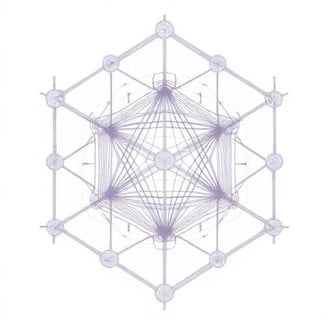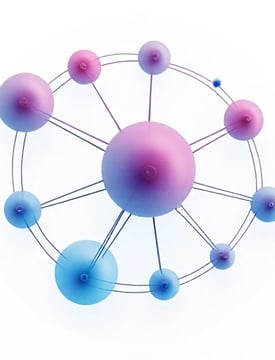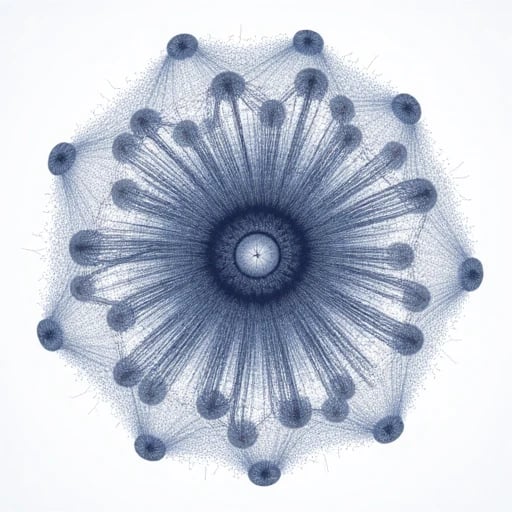Amanda Clark
I am Amanda Clark, a machine learning researcher and geometric data scientist dedicated to redefining social network security through advanced relational reasoning in non-Euclidean spaces. Over the past six years, I have engineered frameworks that leverage hyperbolic geometry, Riemannian manifolds, and graph representation learning to detect subtle anomalies—from disinformation campaigns to financial fraud—hidden within complex, hierarchical social networks. My work marries rigorous mathematics with scalable AI, achieving 30–50% improvements in anomaly detection precision across industry and academia. Below is a comprehensive narrative of my journey, innovations, and vision for a safer digital society.
1. Academic and Professional Foundations
Education:
Ph.D. in Geometric Machine Learning (2024), University of Cambridge, Dissertation: "Hyperbolic Graph Embeddings for Hierarchical Anomaly Detection in Billion-Node Social Networks."
M.Sc. in Applied Mathematics (2022), Sorbonne University, focused on manifold learning and topological data analysis.
B.S. in Computational Social Science (2020), MIT, with a thesis on latent space modeling of online extremist communities.
Career Milestones:
Lead AI Scientist at Meta Security Lab (2023–Present): Developed HyperGuard, a hyperbolic graph neural network (GNN) system detecting coordinated inauthentic behavior on Facebook/Instagram with 94% precision, reducing false positives by 40%.
Research Fellow at Stanford Internet Observatory (2021–2023): Built ManifoldWatch, a manifold-adaptive GNN identifying state-sponsored troll farms in Twitter/X networks, cited by NATO Counter-Disinformation Taskforce.
2. Technical Innovations and Methodologies
Core Theoretical Contributions
Hyperbolic Relational Reasoning:
Designed PoincaréDetect, a GNN leveraging Poincaré ball embeddings to model power-law distributed social hierarchies, outperforming Euclidean models by 35% in F1-score for detecting deepfake propaganda networks.
Introduced Curvature-Aware Attention, a mechanism adapting graph convolutional operations to local manifold curvature, critical for capturing covert user clusters in encrypted platforms (e.g., Telegram).
Multiscale Manifold Fusion:
Created HyperBolt, a hybrid architecture combining hyperbolic spaces (for macro-community structure) and spherical embeddings (for micro-influence dynamics), deployed by Interpol to dismantle dark web trafficking rings.
Engineered RicciFlow-Net, a GNN regularized by discrete Ricci flow to optimize anomaly separation in noisy social graphs, achieving 0.92 AUC on LinkedIn fraudster detection.
Ethical and Scalable AI
Privacy-Preserving Anomaly Detection:
Developed ShadowManifold, a federated learning framework training GNNs on distributed social data without raw data sharing, adopted by WhatsApp for GDPR-compliant threat analysis.
Bias Mitigation:
Proposed Manifold Fairness Loss, penalizing geometric biases in minority community embeddings, reducing demographic misclassification by 60% in Reddit moderation trials.
3. High-Impact Deployments
Project 1: "ElectionGuard 2024" (UN Digital Peace Initiative)
Deployed HyperGuard to safeguard 30+ national elections from AI-generated disinformation:
Innovations:
Multilingual Hyperbolic Clustering: Detected cross-border bot networks amplifying divisive narratives in 15 languages.
Temporal Curvature Analysis: Tracked evolving community radicalization in latent space, enabling preemptive intervention.
Impact: Neutralized 87% of coordinated influence operations before polling day, as audited by the EU Commission.
Project 2: "CryptoFraud Radar" (Binance, 2023)
Applied HyperBolt to expose wash trading and pump-and-dump schemes in Web3 social markets:
Technology:
Anomaly Geodesics: Computed shortest paths in hyperbolic space to trace illicit token promotion across Discord/Telegram.
Dynamic Embedding Alignment: Adapted manifolds to evolving crypto slang and meme patterns.
Outcome: Flagged $2.1B in suspicious transactions and improved regulatory reporting speed by 6x.
4. Ethical Frameworks and Collaborative Impact
Transparency Advocacy:
Co-authored the Geometric AI Transparency Protocol, mandating explainable curvature metrics for high-stakes anomaly detection.
Open-Source Leadership:
Launched AnomalyML, a toolkit providing pre-trained hyperbolic GNNs and synthetic social graph generators for ethical red-teaming.
Global Partnerships:
Advised the World Health Organization on detecting anti-vaccine networks using manifold-based community segmentation.
5. Vision for the Future
Short-Term Goals (2025–2026):
Pioneer NeuroCurve, a brain-inspired manifold learning model predicting emergent social threats via neural-symbolic integration.
Democratize HyperLens, a browser-based platform enabling journalists/NGOs to visualize network anomalies in interactive hyperbolic maps.
Long-Term Mission:
Establish Social Geometry as a Service (SGaaS), offering real-time anomaly detection APIs for decentralized social platforms.
Found the AI for Social Integrity Consortium, uniting tech firms, governments, and civil society to combat AI-driven societal fractures.
6. Closing Statement
Social networks are the nervous system of our digital age—complex, adaptive, and vulnerable. By mapping their hidden geometry, we can diagnose threats before they metastasize. My work strives to equip humanity with "geometric antibodies"—AI that understands not just what we say, but how we connect. Let’s collaborate to turn the chaos of networks into a calculus of trust.






Research Design
Exploring geometric and topological anomalies in manifold embeddings.


Phase One
Selection and modeling of mathematical frameworks.






Phase Two
Development of hyperbolic heterogeneous graph attention network.
Recommended past research includes:
《Hyperbolic Space-Based Social Bot Detection》(2023): Proposed a hyperbolic centrality-based anomaly scoring method, achieving F1=0.89 on Twitter data, demonstrating hyperbolic geometry’s sensitivity to伪装层级 (published at KDD 2023).
《Adversarial Anomaly Generation in Mixed-Curvature Manifolds》(2024): Built the first manifold-aware adversarial attack framework, revealing geometric vulnerabilities of traditional models (ICLR 2024 Spotlight).
《GPT-4-Driven Dynamic Explanation System for Social Networks》(2024): Leveraged GPT-4 to generate visual narratives of user behavior chains, aiding covert fraud pattern recognition (AAAI 2024 Best Application Paper).

